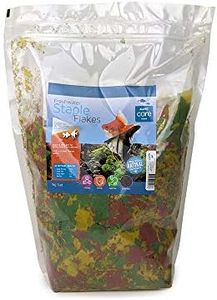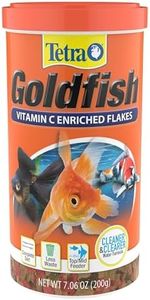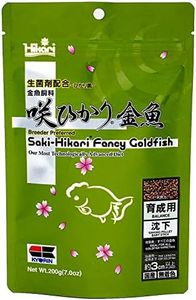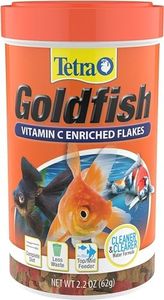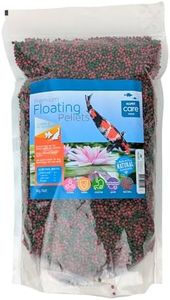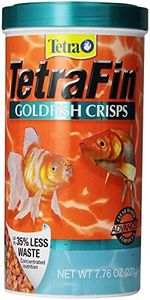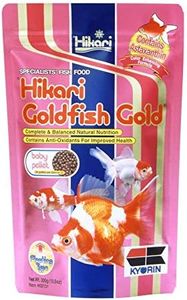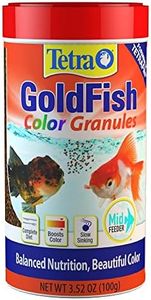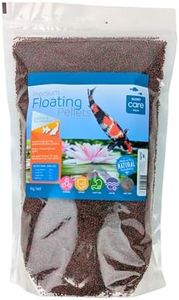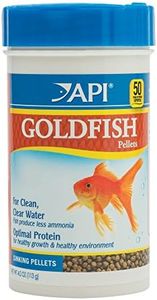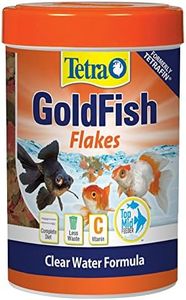We Use CookiesWe use cookies to enhance the security, performance,
functionality and for analytical and promotional activities. By continuing to browse this site you
are agreeing to our privacy policy
10 Best Goldfish Food
From leading brands and best sellers available on the web.Buying Guide for the Best Goldfish Food
Choosing the right food for your goldfish is essential to keeping them healthy, happy, and vibrant. Goldfish have unique dietary needs, so it’s important to pay attention to their nutrition and the type of food you provide. With so many options available, understanding what makes each food type and ingredient different will help you make the best choice for your fish. Your goldfish's age, activity level, and health concerns should guide your selection.Food Type (Pellets, Flakes, Gel, or Live/Frozen)The form of food you choose determines how your goldfish will eat it and how it affects water cleanliness. Pellets and flakes are the most popular—pellets sink, while flakes often float. Gel food is softer and can be tailored with added nutrients, while live or frozen foods mimic a goldfish’s natural diet and can promote activity. Pellets are better for larger fish, flakes suit small or young goldfish. Gel foods are great for sensitive digestions and more control over ingredients. Live/frozen options are best used as a supplement, not a main diet. Choose a type that matches your goldfish’s size, appetite, and your ability to manage tank maintenance.
Protein ContentProtein is crucial for goldfish growth, development, and color. Young or growing goldfish need higher protein, while adults do better on moderate amounts. Typically, foods range from about 30% to 45% protein. Higher protein (closer to 40%) is ideal for young or breeding fish, while 30-35% is sufficient for adult maintenance. Consider your fish's age: young goldfish or fry benefit from more protein, while mature goldfish need less to avoid health problems.
Vegetable and Plant MatterGoldfish are omnivores, needing both protein and plant material. Foods rich in spirulina, peas, or other vegetables help with digestion and prevent issues like swim bladder disorder. Some foods feature more plant-based ingredients, which are better for digestion, especially in fancy goldfish. Notice the ingredient list—choose foods with visible plant components if your goldfish have slow metabolism or delicate stomachs.
Floating vs. Sinking FoodFloating foods let you observe your fish eating, while sinking foods can prevent gulping air—a common issue for fancy goldfish, leading to digestive upset. Floating foods are good for healthy, active goldfish in shallow tanks. Sinking foods are better for bottom-feeders, slower or more sensitive varieties, or deeper tanks. Consider if your goldfish are prone to swim bladder problems when picking this feature.
Ingredient Quality and FillersHigh-quality food uses named fish meals or whole fish, not just generic 'fish meal' or vague flour. Cheaper foods often use fillers like corn or wheat, which offer little nutrition and can pollute tank water. Review ingredient labels: look for named fish, shrimp, or natural plant products at the top, and avoid foods where fillers are prominent. The better the ingredients, the healthier and more active your goldfish will be.
Added Vitamins and SupplementsAdded vitamins, minerals, and supplements like vitamin C or color enhancers help support immune system, growth, and coloration. Some foods are fortified with extra nutrients for fish health. If your goldfish are recovering from illness or you want to enhance their coloration, look for foods with added vitamins or natural color enhancers like spirulina.
